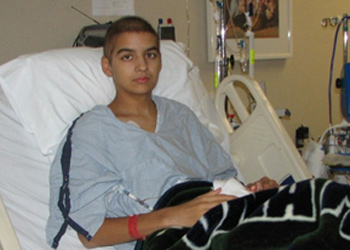A closer look at Dr. Elvin Wagenblast’s AML study

Leukemia is the most common type of cancer in children. Even before a child is born, genes can undergo changes that are linked to the development of leukemia. There is a specific type of leukemia called acute myeloid leukemia (AML) that has unique gene changes, including when two genes called NUP98 and NSD1 combine. About 15% of children with AML have this gene fusion, and it makes their prognosis worse. Sometimes, another gene, called WT1, also has changes in cases of AML where children experience chemotherapy-resistance.
Doctors and scientists are not yet sure why this type of leukemia doesn’t respond well to treatment. In studies with mice, they observe mixed results when trying to recreate this leukemia.
To understand this leukemia better and find new treatments, Dr. Elvin Wagenblast will create a special model that imitates the gene changes found in patients. His team is going to use different types of human blood cells to see how leukemia develops and if it can resist standard chemotherapy. They will study the genes and molecules involved and find ways to stop the leukemia from growing. The goal is to identify targets for new treatments that can be tested in more studies and help improve the lives of children with AML and their families.
A Novel Technique: Dr. Wagenblast is working to create better treatments
His team will use a special technique called CRISPR/Cas9 to study leukemia in the lab using normal blood cells. This will help him understand how the disease grows and changes over time. By trying new experiments, he hopes to find out why children get leukemia and develop new ways to treat it.
Think of genes as a recipe book that tells your body how to grow and function. Sometimes, there may be mistakes in the recipe that cause health problems. CRISPR/Cas9 is a tool that allows scientists to edit the recipe book. It’s a new technology that has shown a lot of promise in helping us understand and potentially treat genetic diseases in the future.
By using CRISPR/Cas9, scientists can remove or add specific pieces of the genetic code. This can help them study how genes work, find out which genes are linked to certain diseases, or even try to fix genetic disorders.
Dr. Wagenblast’s work is supported by a CureSearch Young Investigator Award. With this support, he will try new and unique ways to figure out why leukemia happens in children. His ultimate goal is to make important progress in understanding and treating childhood leukemia, which will help many children with this disease.



